JOHNNY MNEMONIC. Quintessentially cyberpunk
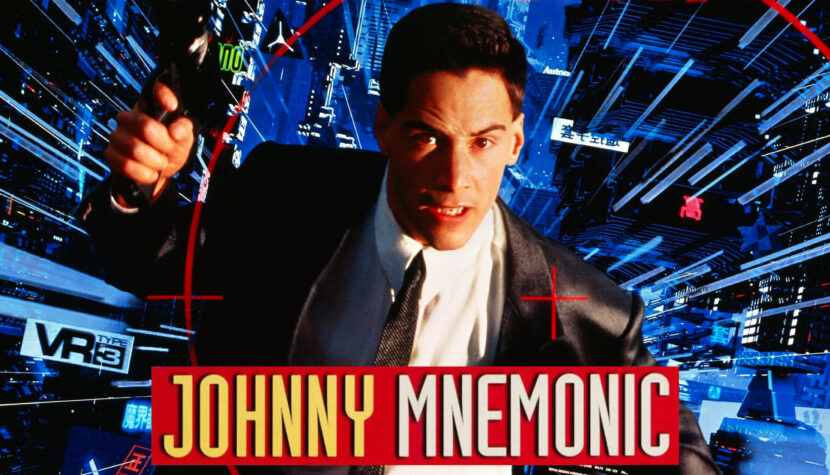
It’s amusing to watch cyberpunk classics from years ago. Floppy disks, cables, bulky monitors. The themes have outpaced time, but the staging remains stuck in the past. In something like Johnny Mnemonic, for example, the entire conflict revolves around 320 gigabytes of data. And they talk about it as if the digitally augmented brain of the protagonist, serving as a hard drive, would explode from that amount of content. I’m almost afraid to think about what would happen to Keanu Reeves’ head if it had a terabyte or petabyte capacity.
The cult
The 1995 production is considered a cult film for many – for me personally as well. Several factors contributed to its reception, and I’ll briefly mention them here. So, there will be less about how poor the film is and how it managed to receive a low rating on Rotten Tomatoes (since having only 18% positive reviews can be quite disheartening). Instead, I’ll focus more on the fact that Johnny Mnemonic is, for me, the quintessence of cyberpunk – as it strongly fetishizes technology, as implied by the “cyber,” and equally emphasizes systemic rebellion, as reflected in the “punk.” It does what tigers like most, and it does it well.
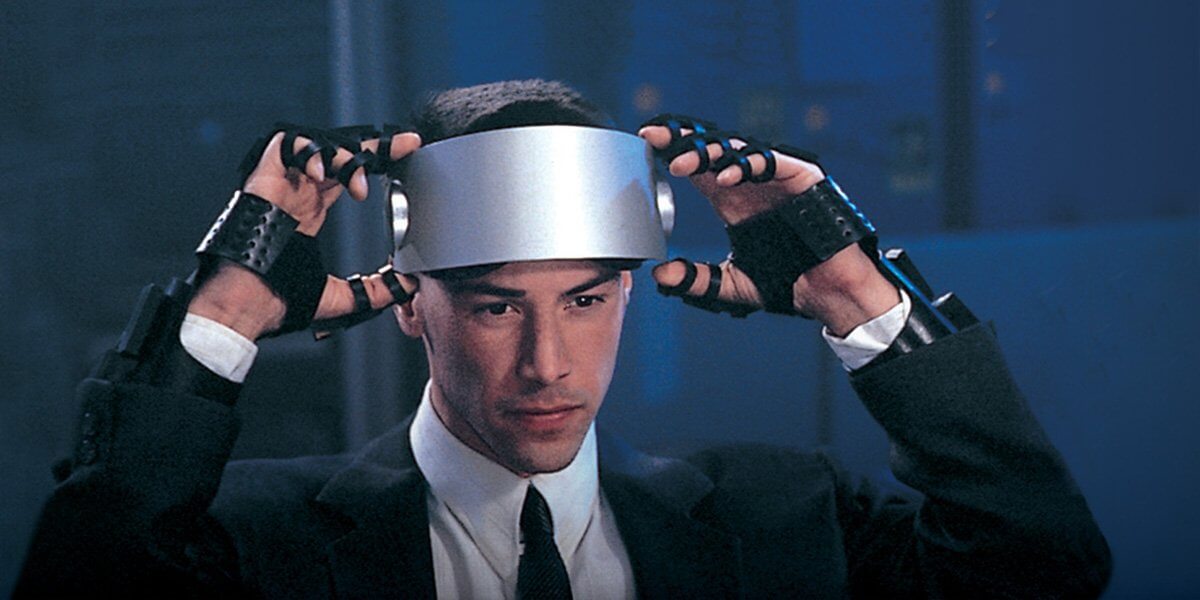
However, let’s start with the basics. Johnny Mnemonic was written by a man who had the best qualifications to tell a cyberpunk story. William Gibson based the film’s screenplay on his own short story of the same title. His name should be well-known to any science fiction enthusiast. The famous Neuromancer from 1984, which starts the so-called Sprawl Trilogy, is a tale about a hacker who navigates virtual reality exceptionally well, which leads to him receiving a special assignment (similarly to the fate of the protagonist in the reviewed film). Over the years, there was much talk about adapting this book into a movie (I remember that at one point, the directorship was attributed to Vincenzo Natali, the author of Cube), but I’m not entirely convinced if it’s still necessary today. After all, cinema has been drawing heavily from Gibson’s work for years, processing the technological fears of the father of cyberpunk. Without Gibson, there would be no Strange Days, and certainly no The Matrix. This latter film not only shares thematic elements with Johnny Mnemonic, but I’ll get to that later.
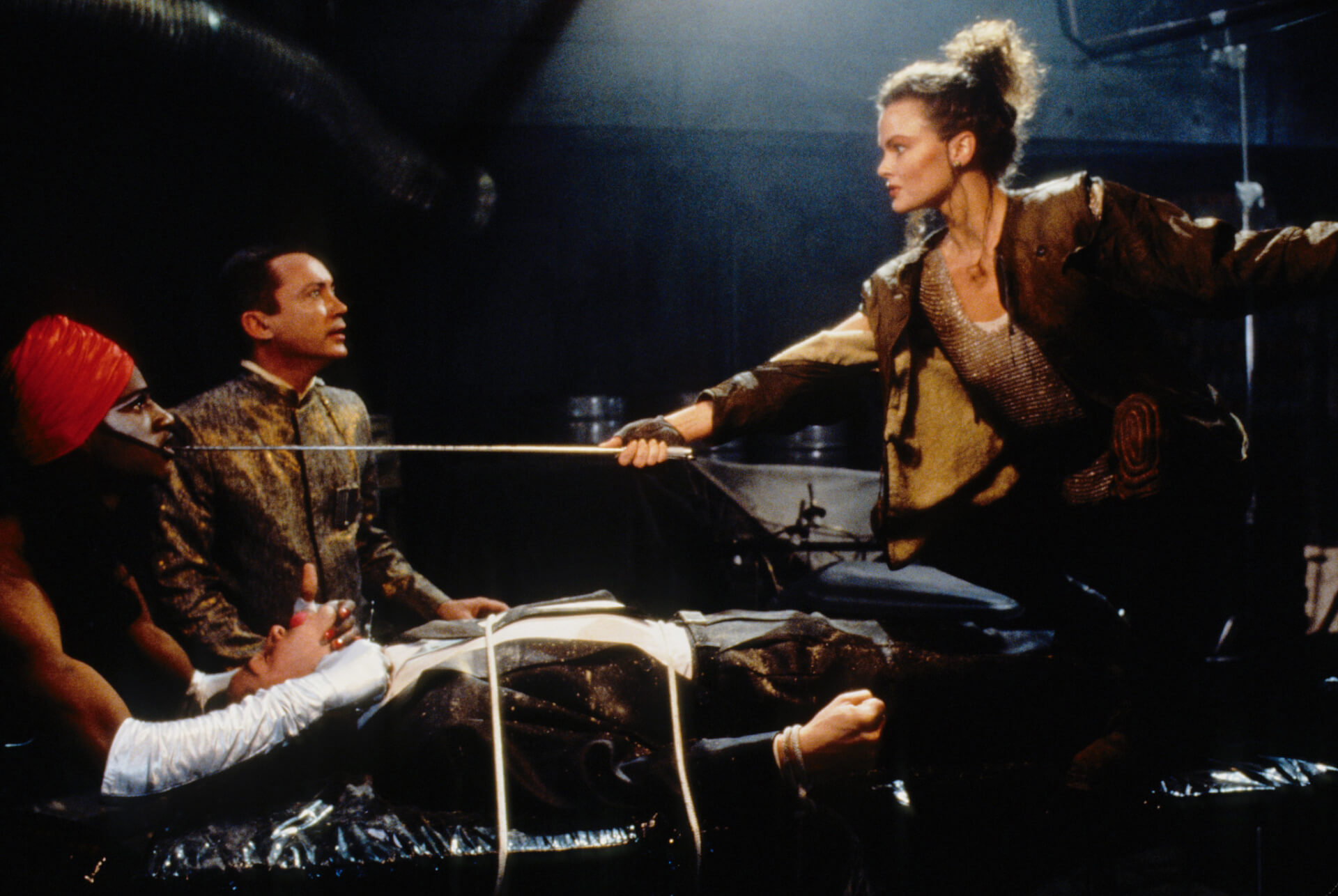
Johnny Mnemonic – uneven movie
Conceptual potential is one thing, but the execution of the screenplay is another. It’s no revelation that Johnny Mnemonic is a very uneven film. Though it’s an intelligent film, it’s also been rather foolishly executed. It’s not rocket science to say that, at times, the 1995 film looks like B-movie cinema. Robert Longo, the director, is likely the one to blame for this. Most probably due to his lack of experience, the film at times looks like a B-movie. Longo might be a good painter, but he’s certainly not a good director. He tried his hand at Tales from the Crypt and also has a short film to his name. However, Johnny Mnemonic is his only feature project. More of his creative work can be found in museums and art galleries. The language of film didn’t seem to suit him particularly well, although in my opinion, as a debutant, he didn’t suffer an outright failure (which I’d like to emphasize). Nonetheless, it’s clear that the film was poorly directed. Chaos seeps through the scenes, intricately prepared inserts intermingle with amateurism, a lack of decisiveness in terms of tone is evident, and the actors often overact. It’s very difficult to categorize Mnemonic as serious science fiction cinema, although its thematic material certainly aspired to that label.
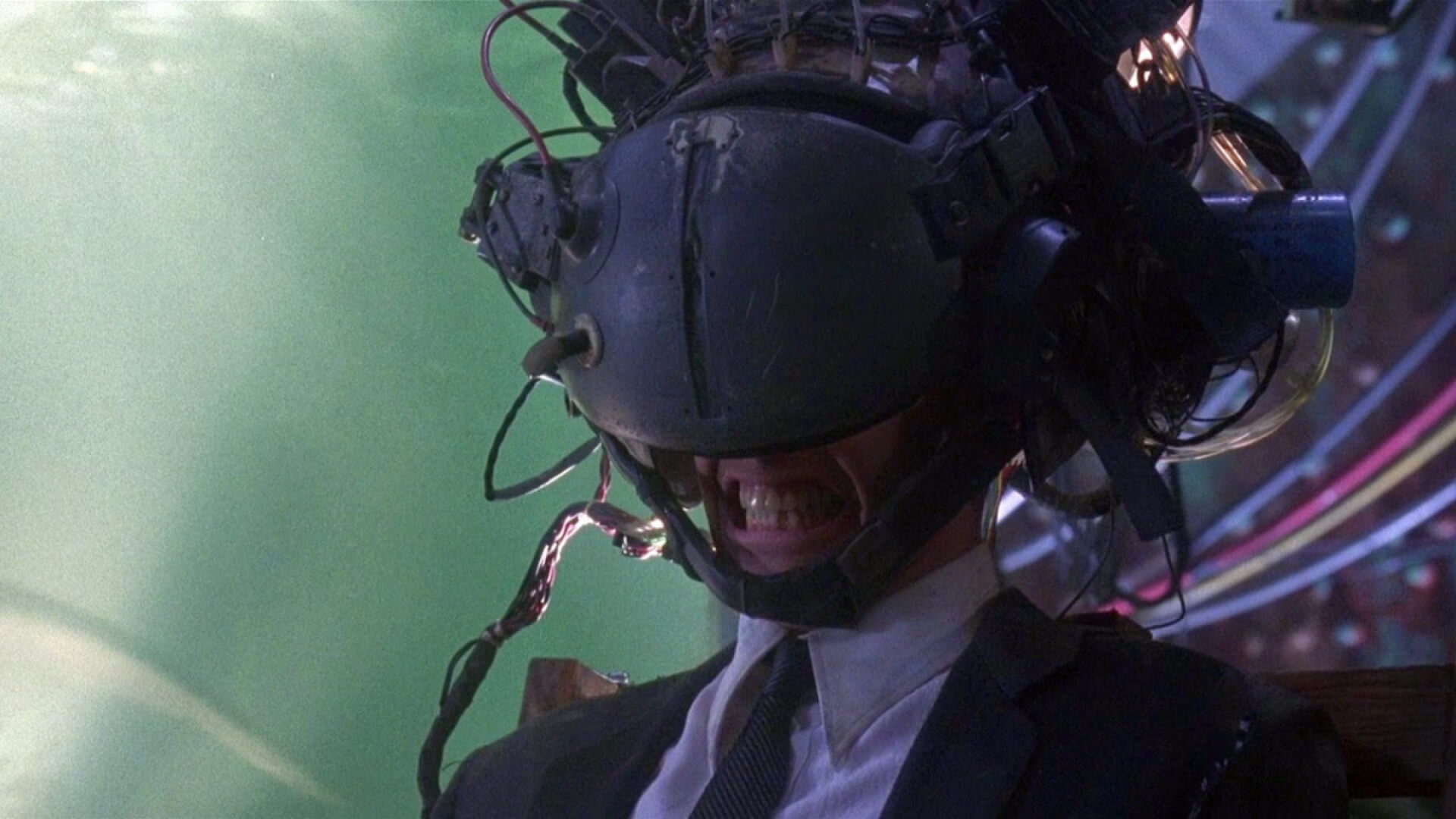
Surprisingly, however, one can overlook the directorial shortcomings when considering how the film effectively communicates with the viewer through nuances. Yes, Johnny Mnemonic is one of those science fiction films that relies on atmosphere. There’s plenty of attractive props here, adding visual appeal to individual scenes. One of the adversaries of the main character, for instance, wields a laser whip, which I personally still consider one of the more interesting weapons in science fiction cinema. On the other hand, the scene where the titular character finally sits down in front of a computer and connects to the network using VR goggles – that’s pure virtuosity and the film’s calling card for years to come. I would also add a certain dolphin (referred to as a fish) and the eccentric costumes of some characters to illustrate how the film used set design, effects, and costumes to create atmosphere. Concluding this audiovisual thread, I must also mention the music. It was composed by none other than Brad Fiedel himself. Yes, you recognize the name – he’s the composer of The Terminator, responsible for one of the most iconic musical motifs in science fiction cinema. Maybe the musical notes of Johnny Mnemonic can’t quite compete with that motif, but they’re certainly recognizable.
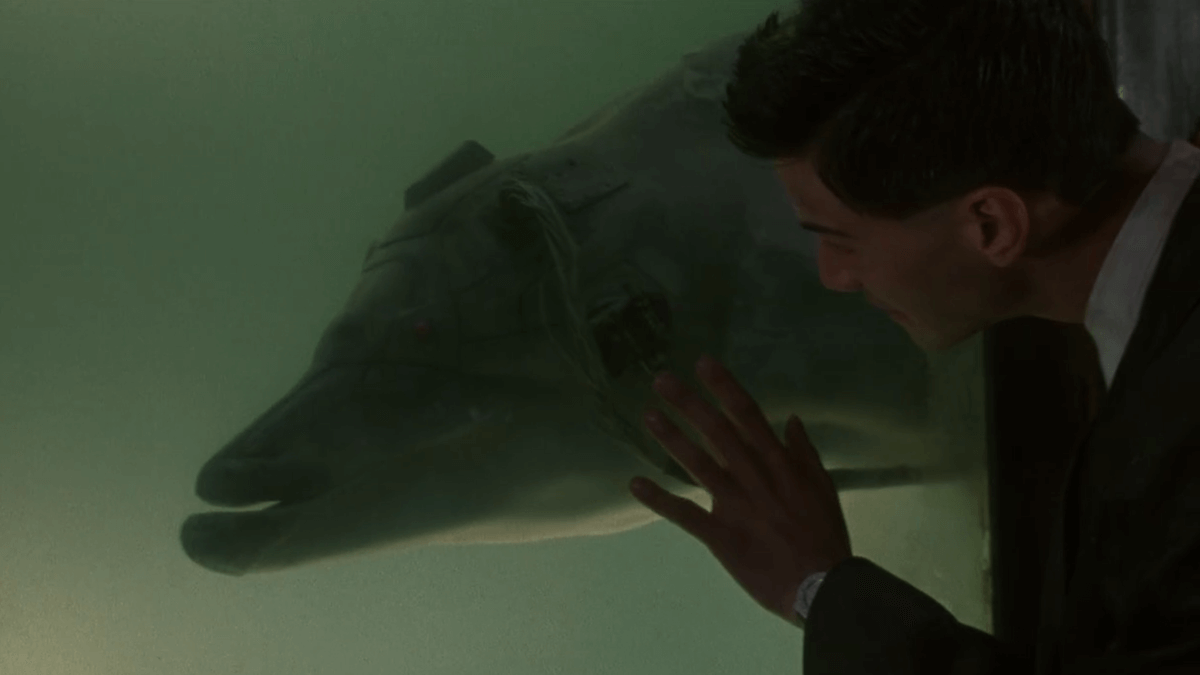
Distinctive characters
Another element that stayed with me long after the screening is the array of distinctive characters portrayed by equally distinctive actors. Takeshi Kitano, Dolph Lundgren, Udo Kier, and rapper Ice-T – all contributed to building an incredibly colorful background. Yet, the most important actor is the one in the foreground. A few lines above, I mentioned the connection between the 1995 film and The Matrix. Besides the theme of simulation and virtual reality, the most significant link between the two works is undoubtedly Keanu Reeves. It’s a great role, although drastically different from Neo. His Johnny Smith (by the way, the same last name as the main antagonist in The Matrix) is once again a character heavily focused on saving the world, but much more brash and rough in demeanor. While Neo evolves from a hacker absorbed in code to the chosen one, Johnny seems to participate in the entire struggle almost casually, visibly burdened by the weight of his task. It’s not easy to root for him.
However, this doesn’t change the fact that Reeves is well-suited for the role with a computer. These two roles had a strong impact on the actor’s image. Regardless of how many action films, dramas, or comedies he may still appear in, many, including myself, will always associate him as a star of science fiction cinema. Perhaps that’s why in Cyberpunk 2077, a video game developed by Polish studio CD Projekt RED, Keanu Reeves takes on one of the characters. I see it as a tribute to the actor’s achievements in this field. However, the creators of the project emphasize that it wasn’t hacker Neo that served as their main inspiration in creating the character, but rather Johnny Smith. The game is also directly related to the visual atmosphere of Robert Longo’s cult film, serving as its spiritual continuation.

The nuances I’ve mentioned are likely enough to pique your interest in this story. Johnny Mnemonic is a very concrete piece of cyberpunk material that may be somewhat grotesque and somewhat naive, but also distinctly anticipatory of the future, fitting well into the spirit of its era. Surprisingly, apart from depicting a very credible development of technology, this cult 90s sci-fi film proves to be very relevant to today’s audience after years have passed. Remember that Johnny Mnemonic is a film whose starting point for the plot is… an epidemic. To differentiate, the incurable disease in the movie attacks the human nervous system, causing epileptic states. But what are powerful pharmaceutical corporations for? In the film, a race is on to create a cure that will be salvation for some and an opportunity for others to enrich themselves. All of this takes place during a cultural clash of worlds: the Western and Eastern. The film’s action unfolds in 2021, so let me ask a rhetorical question: haven’t we already caught up with those times?

